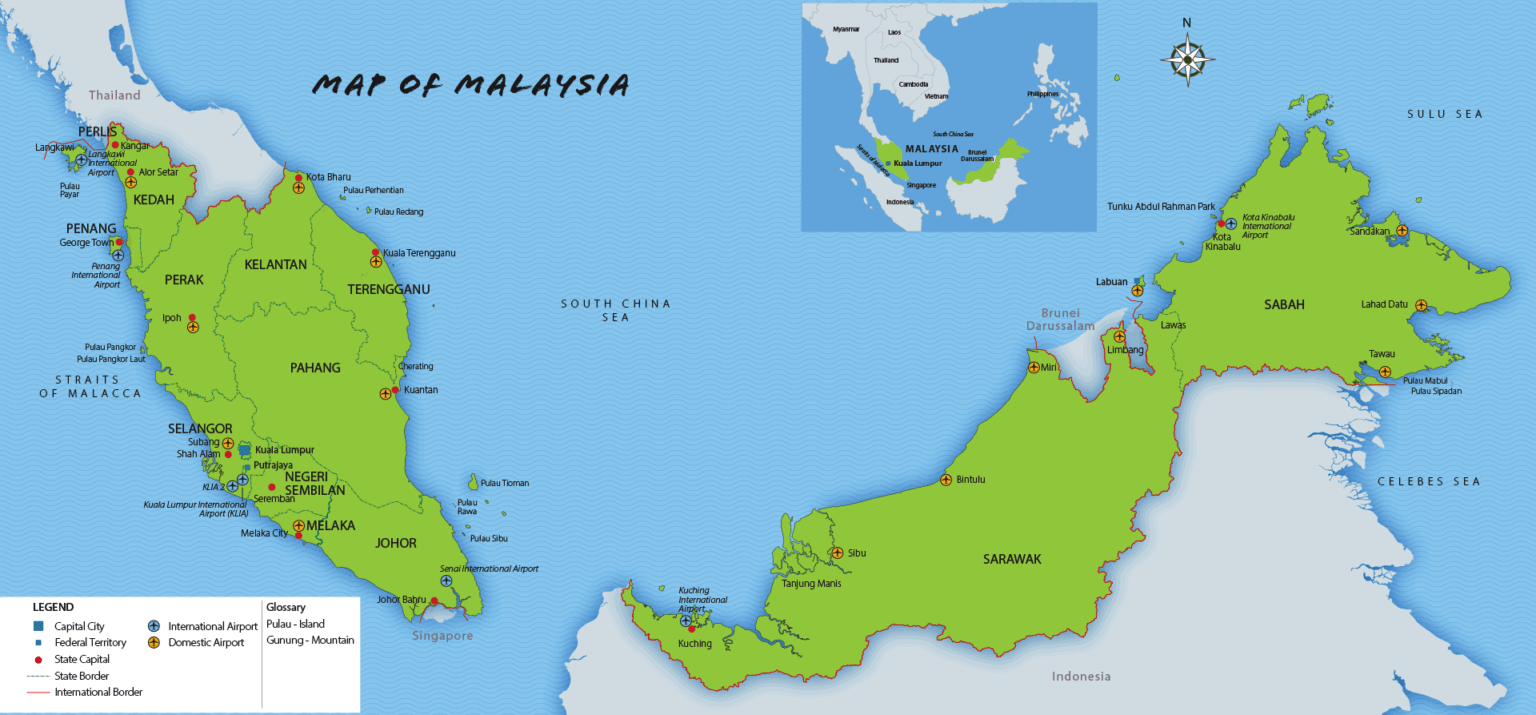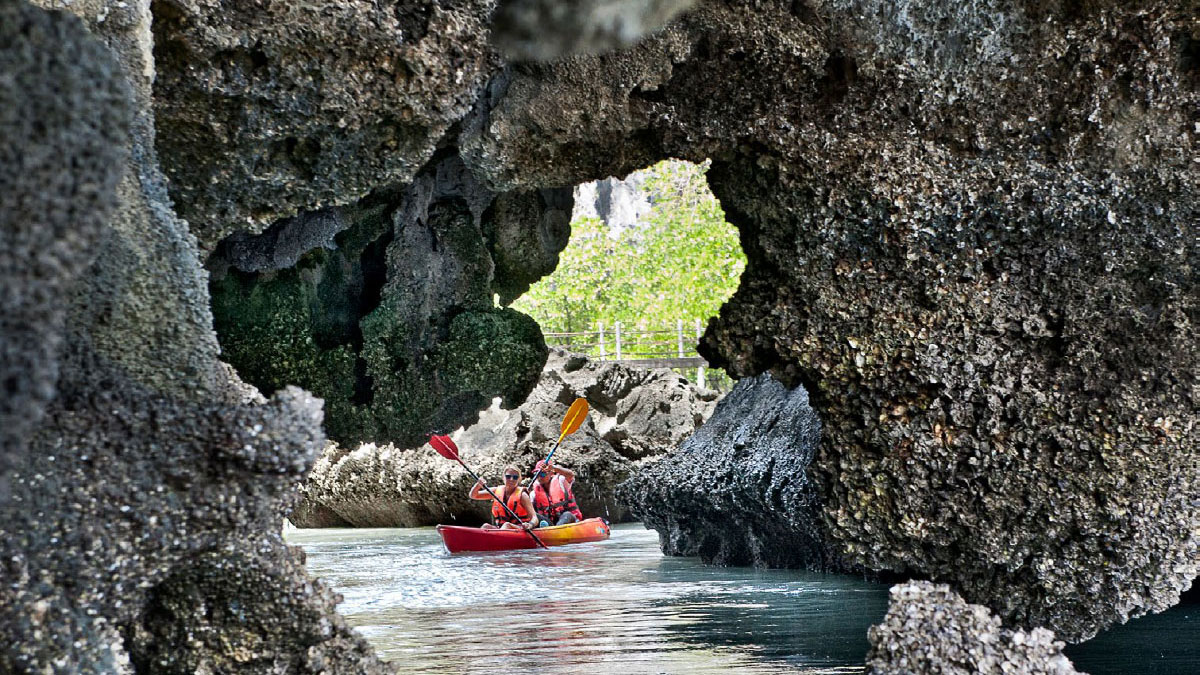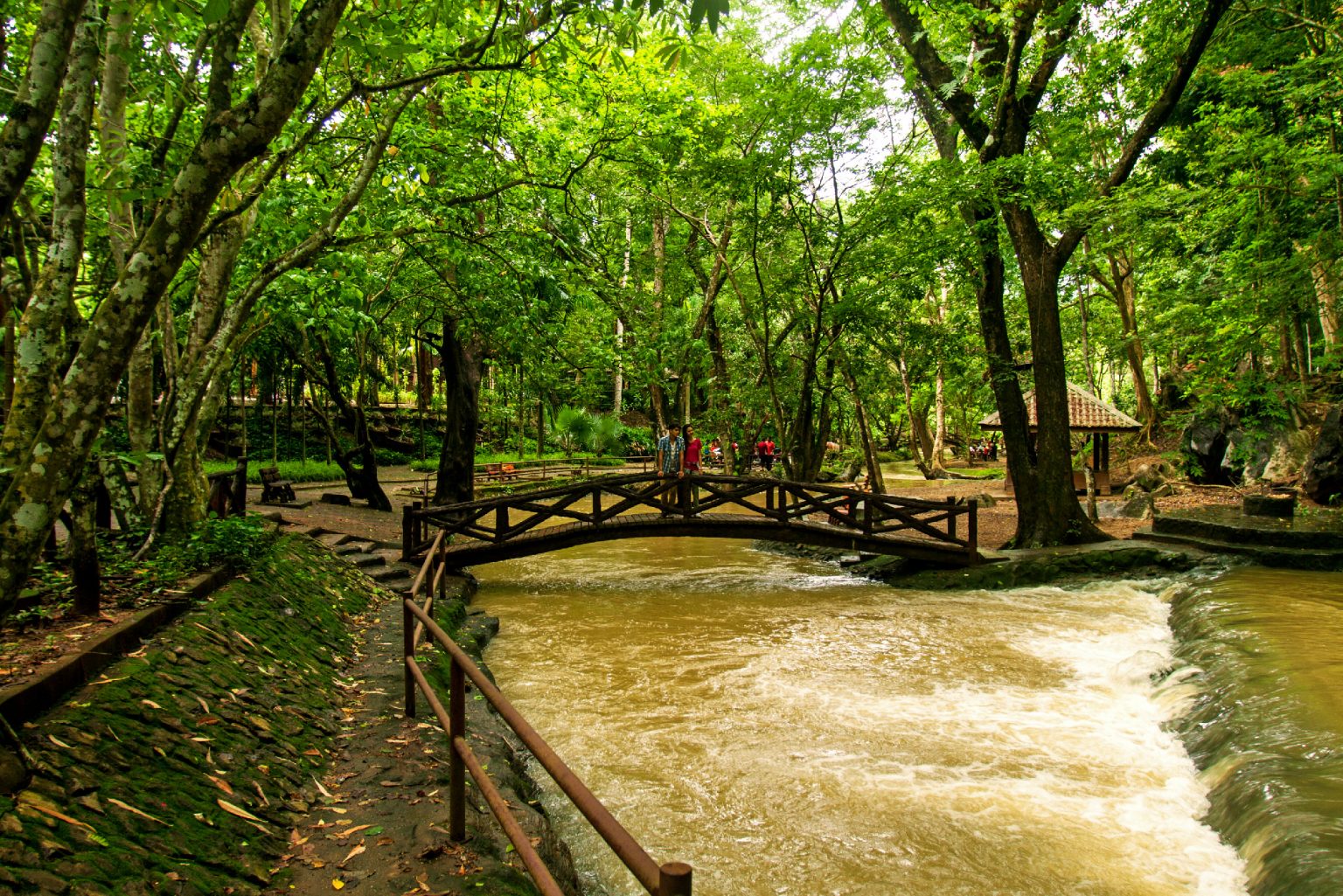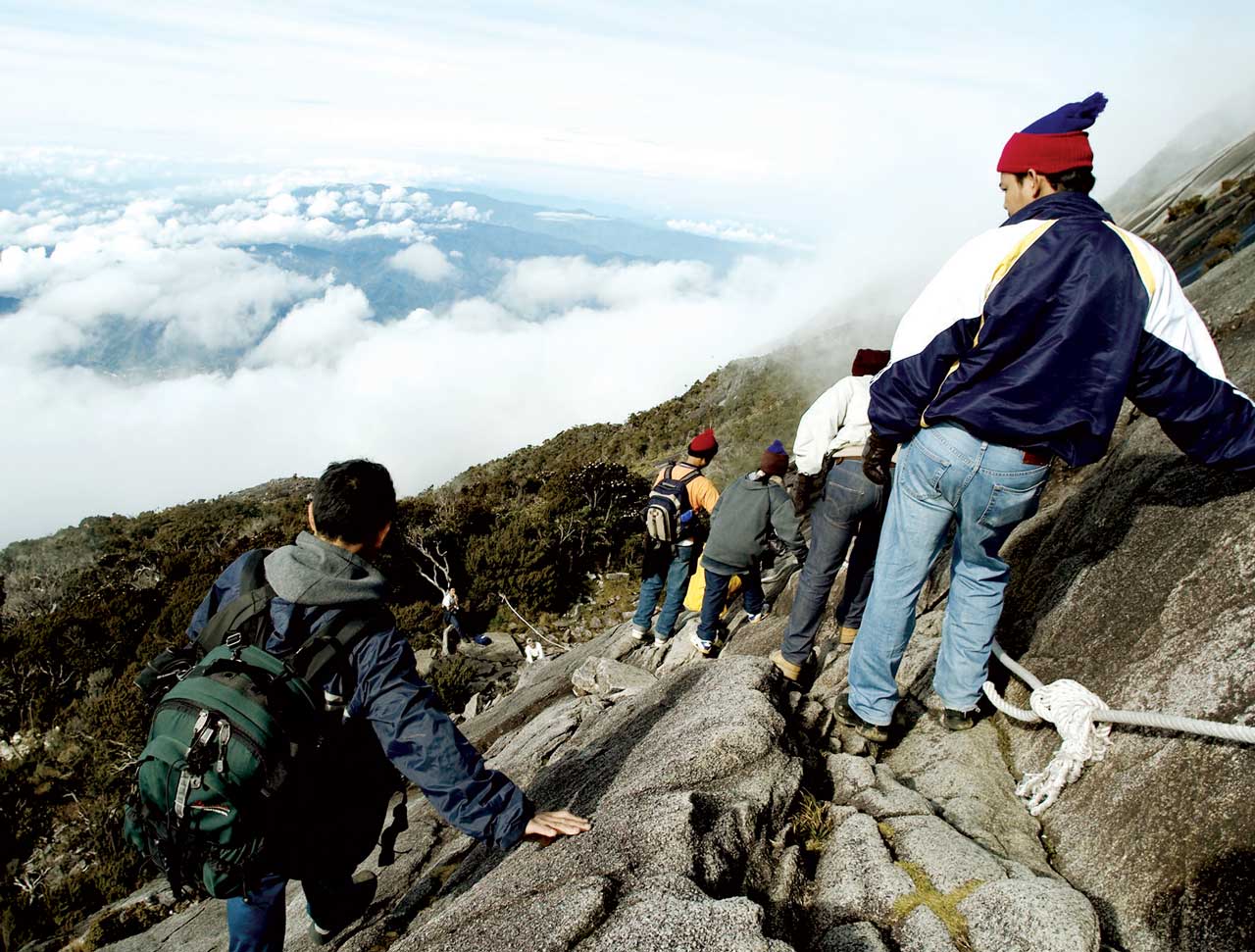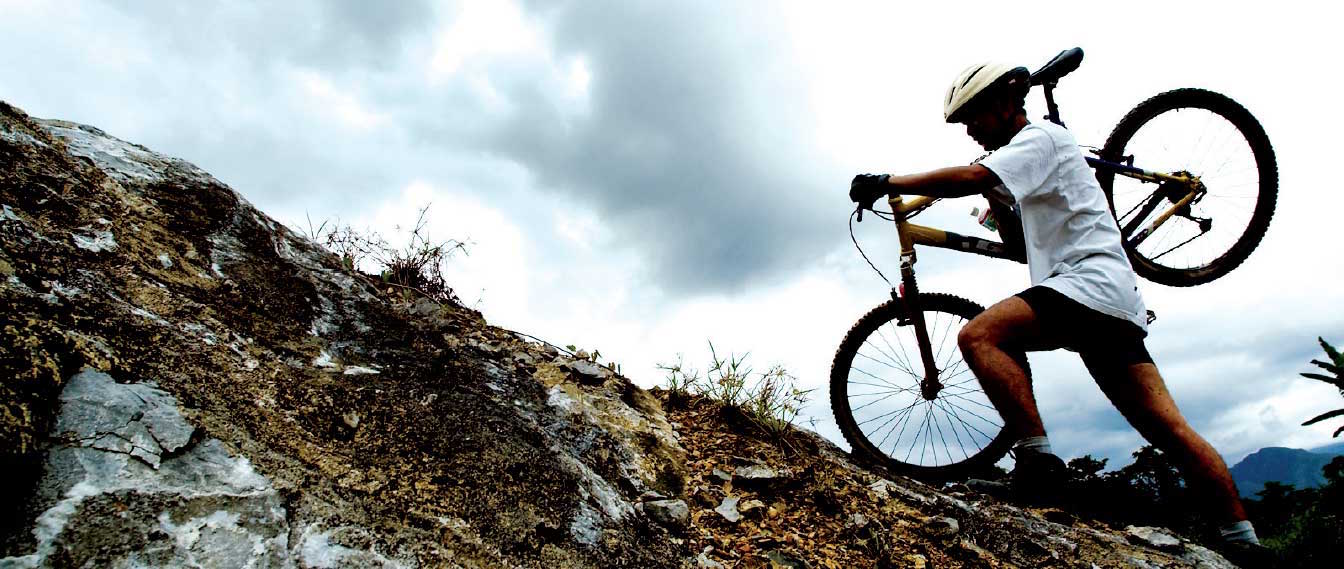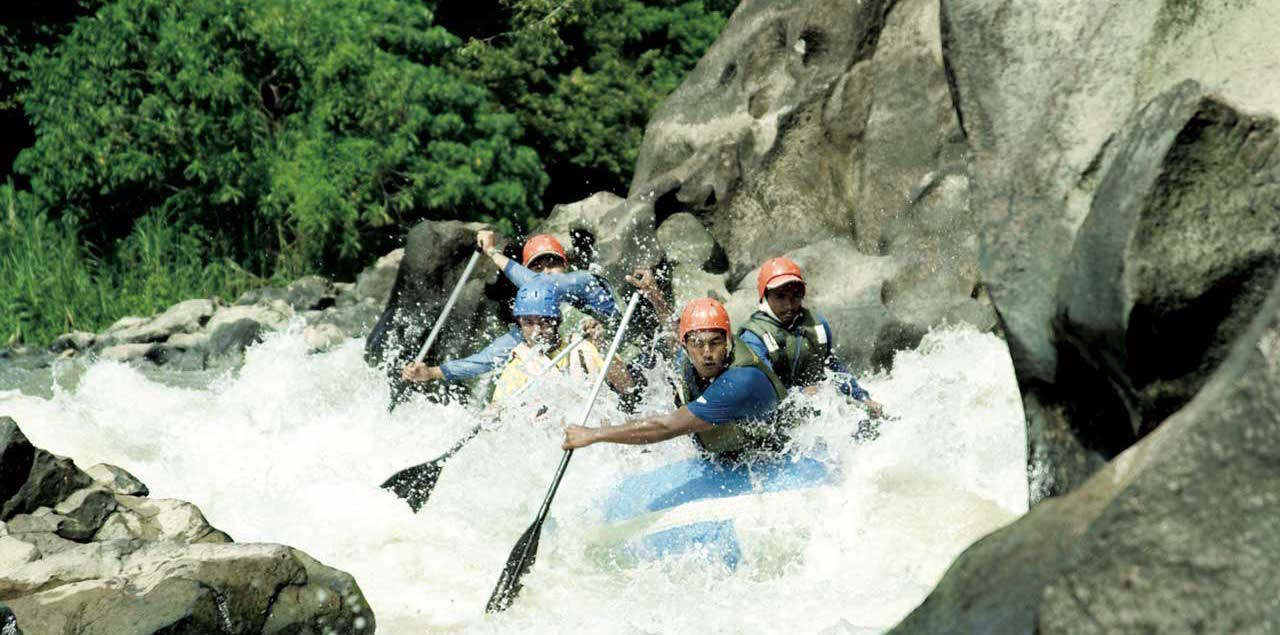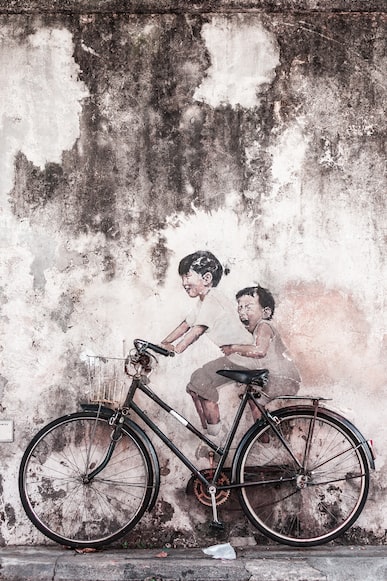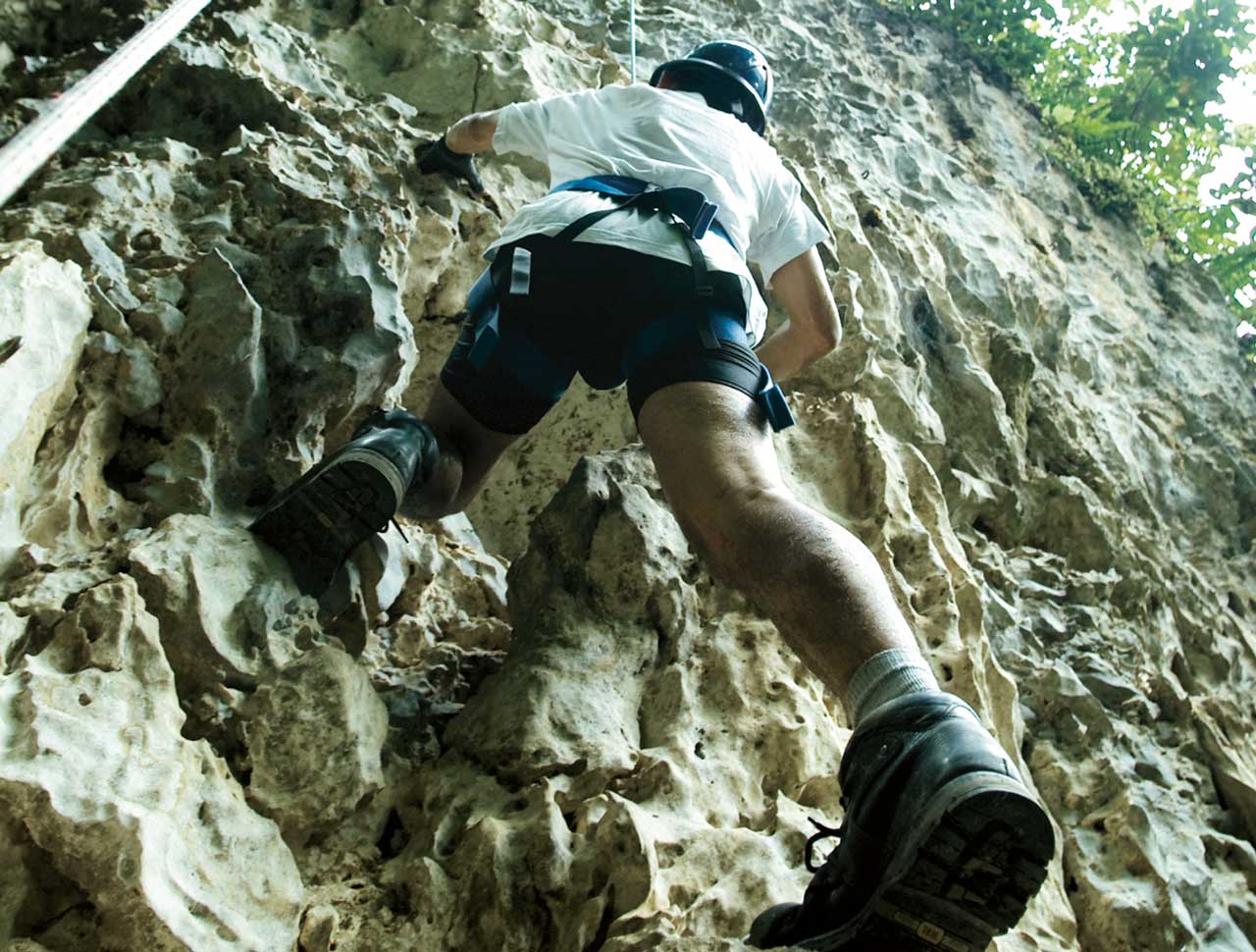Today's Highlights
JUNGLE DISCOVERIES
With its glorious vistas, verdant undulating terrain and varied tropical landscapes, Malaysia’s beautiful rainforests offer vast possibilities for trekking and camping. The country’s extensive array of national parks and wildlife reserves are ideal for communing with nature and discovering her secrets.
From the primordial rainforest of Taman Negara to the wildlife sanctuaries at Danum Valley and the Kinabatangan floodplains, some of Asia’s well-preserved environments offer nature lovers a wealth of experience.
While amateurs may try Malaysia’s many easily accessible recreational forests near urban centres, seasoned explorers can go for challenging weeklong treks up mountains such as Gunung Tahan, the tallest peak in Peninsular Malaysia
For the uninitiated, having a trained local guide is necessary to ensure safety and to learn about the amazing and recious diversity of flora and fauna in the ecosystem. Tropical rainforests are dense, and the thick vegetation provides camouflage for the jungle denizens. It takes patience and a trained eye to see them.

DIVERSITY OF ENVIRONMENT
Swampy mangroves, extensive river floodplains, dipterocarp rainforests and montane hillscapes are among the varied environments that can exist even within trekking distance of each other. Each possesses its own ecosystem and wildlife.
The tidal mangrove forests act as vital buffers against coastal erosion as well as protective breeding and nursery zones for numerous fish and aquatic species. There are mangrove belts along most of Peninsular Malaysia’s west coast as well as in Sabah and Sarawak. Some, such as in Kuala Selangor Nature Park, have boardwalks for the safety and convenience of visitors.
The most common type of rainforest is the dipterocarp forest. It is one of nature’s most complex ecosystems, a habitat for thousands of plant species ranging from tiny lichens to exotic palms, ferns and vines and huge trees rising well over 50m to the heavens. Each has its own role in the jungle’s cycle of life.
Further up the hills and mountain slopes, montane forest environments take over with their cooler ambience and presenting spectacular views that are well worth the trek.
Jungle trekking can take an hour or more and, with camping, as many days as desired. Among the best periods to go trekking in Peninsular Malaysia is in the ‘dry season’ from March to September when the rainfall is less. In Sabah, the ‘wet season’ is from October to February and Sarawak is from November to February.
In many areas, jungle trekking can be combined with other interesting activities such as river expeditions.
TREASURES AND SENSES OF THE RAINFOREST
Malaysia’s primeval and unexplored rainforests offer intrepid trekkers great opportunities to observe tropical flora and fauna. The wilds of Malaysia overflow with fantastic plant and animal diversity that can be found in the competitive conditions of the ecosystem. Many species are exotic, rare or even endemic to the particular region and are protected animals in the country. Tigers and elephants are among the protected species in Endau- Rompin.
Generally, most rainforest animals are shy or camouflage themselves to avoid predators or to hunt. ‘Bumbun’ or tower hides and canopy walks, such as at Taman Negara, aid those searching to spot the inhabitants.
Take the time to spot the many insects and butterflies flitting about in the forests of Peninsula Malaysia. Marvel at the
pendulous nose of the proboscis monkeys found at Sukau in Sabah and Bako in Sarawak. Listen to the swooshing wingbeats of colourful hornbills in the vales of Sarawak or the call of gibbons echoing at dawn in Danum Valley in Sabah.
Besides wildlife, the natural terrain features cool rivers to ford across and enchanting waterfalls to splash around amidst the natural surroundings. A visit to the rainforest requires the full use of one’s senses to discover all its features and creatures.
Part of the adventure is to discover how they all fit together.
RAINFOREST ADVENTURE TIPS
- Find out about the trail and surroundings, be sure that you have enough time to complete the entire route before darkness falls. Do not stray off the path to chase after animals.
- Use good judgment regarding the fitness level required for the trek, and know your physical limits.
- Always inform the park officials or let someone know of your plans and destination for the day, especially if going alone.
- Take plenty of water and pack a few easy to eat snacks to keep energy level up. Unless trekking with a local guide, it is not advisable to eat jungle fruit or drink from any water source.
- In the highlands try to trek on the ridge tops to save energy traversing the steep slopes and to catch a cool breeze.
- Be as quiet as possible to avoid scaring any wildlife. Getting an early start during the dawn provides the best chance to sight animals seeking food and the warmth of the early morning sun.
- Wear thin, loose, preferably cotton clothing to remain comfortable.
- Cover arms and legs with long trousers and long-sleeved shirts to ward off mosquitoes and to provide protection against thorny plants.
- Wear leech socks or long socks to prevent leeches from finding an entry way.
- Choose sturdy footwear with proper ankle support and good traction.
- Be prepared for sudden rain showers by carrying a poncho that wraps over both body and your carrying pack to keep everything dry.
- A wide brimmed hat helps to shade a trekker from the heat of the tropical sun.
CAMPING
Most national parks in Malaysia provide camping sites. There are also many mountain and beach sites which are suitable for camping. In picking a camping site, always take note of the weather conditions. The rainy or monsoon season during December to February renders some camping sites along the river trails of Taman Negara inaccessible. Always check with relevant park authorities first.
The lower altitudes of primary jungles like Taman Negara and Kenong Rimba Park in Pahang; Endau Rompin in Johor; Mulu and Lambir National Parks in Sarawak are humid, so your choice of tents should allow for good ventilation. All-enclosed nylon tents with sewn-in groundsheets are not recommended as they tend to condense air inside. Cotton tents get heavy after absorbing water.
When camping on high altitude locations such as Gunung Jerai in Kedah; Gunung Korbu in Perak; Gunung Tapis and Gunung Tahan in Pahang, choose a site sheltered from the wind and avoid the higher peaks when thunderstorms occur. A self-contained tent with aluminium poles and stakes is best for mountain camping.
Only a basic set up is needed when camping at the marine parks or beaches in the country, such as Pulau Payar in Kedah; Port Dickson in Negeri Sembilan; Pulau Redang in Terengganu; Pulau Tioman and Cherating in
Pahang and Tunku Abdul Rahman Park in Sabah. A hammock or sleeping bag may do very well.
Although most of the national parks and private tourist facilities furnish and rent out camping gear, it may be wiser to bring along basic camping necessities.
Remember to check on restrictions which may apply due to ecological or other reasons. If unsure, contact the park authorities.

CAMPING TIPS
Whether camping in the damp rainforests, on sunny beaches or atop mountain peaks, there are a few easy environmental tips to keep in mind to protect and preserve Malaysia’s campsites.
- Never cut down vegetation in order to make way for a campsite
- Always choose a clear campsite free of debris and away from rotting trees
- Nights in the rainforests may get cooler than expected so bring along a waterproof jacket to keep you warm as well as provide protection from the rain
- During rainy periods, do not camp too near a river or at low areas
- Whenever possible, try to avoid overusing popular camping areas and select an alternative location in order to minimise soil disturbance
- Bring along reusable plastic cups and plates
- Rubbish is to be collected and carried away when you leave, not simply buried carried away when you leave, not simply buried
|
SITES FOR NATURE AND RAINFOREST ADVENTURES
|
|
Perlis State Park
|
Perlis
|
Hill rainforest and limestone pinnacles
|
|
Teluk Bahang
|
Penang
|
Lowland rainforest
|
|
Cherok Tokun Hill
|
Penang
|
Lowland rainforest
|
|
Gunung Jerai
|
Kedah
|
Highland rainforest
|
|
Royal Belum
|
Perak
|
Mixed dipterocarp forest
|
|
Kuala Selangor Nature Park
|
Selangor
|
Mangrove forest
|
|
Templer Park
|
Selangor
|
Mountain forest
|
|
FRIM
|
Selangor
|
Lowland forest
|
|
Kota Damansara Forest
|
Selangor
|
Lowland forest
|
|
Ampang Forest Reserve
|
Selangor
|
Lowland forest
|
|
Kanching Recreational Forest
|
Selangor
|
Lowland forest and waterfall
|
|
Sungai Tua Recreational Forest
|
Selangor
|
Lowland forest and waterfall
|
|
Ulu Bendul Forest Eco Park
|
N. Sembilan
|
Lowland Dipterocarp Forest
|
|
Sungai Menyala Edu-Ecotourism Centre
|
N. Sembilan
|
Lowland Dipterocarp Forest
|
|
Pasoh Forest Reserve, FRIM Pasoh
|
N. Sembilan
|
Lowland Dipterocarp Forest
|
|
Kenaboi State Park
|
N. Sembilan
|
Highland Dipterocarp Forest & Bamboo Forest
|
|
Endau Rompin Forest State Park
|
Pahang
|
Lowland rainforest/State park
|
|
Gunung Ledang
|
Johor
|
Highland rainforest
|
|
Cameron Highlands
|
Pahang
|
Highland and mountain rainforest
|
|
Taman Negara Kuala Tahan
|
Pahang
|
Lowland and hill rainforest
|
|
Taman Negara Sungai Relau
|
Pahang
|
Lowland and hill rainforest
|
|
Tasik Chini
|
Pahang
|
Freshwater swamp forest
|
|
Tasik Bera
|
Pahang
|
Freshwater swamp forest
|
|
Genting Highlands
|
Pahang
|
Highland rainforest
|
|
Fraser’s Hill
|
Pahang
|
Highland rainforest
|
|
Tasik Kenyir
|
Terengganu
|
Freshwater swamp forest
|
|
Gunung Berembun
|
Terengganu
|
Highland and mountain forest
|
|
Gunung Tebu
|
Terengganu
|
Highland and mountain forest
|
|
Sekayu Waterfall
|
Terengganu
|
Waterfall/nature
|
|
Lata Belatan
|
Terengganu
|
Waterfall/nature
|
|
Lata Tembakah
|
Terengganu
|
Waterfall/nature
|
|
Setiu Wetland
|
Terengganu
|
Nature/state park
|
|
Kuala Koh National Park
|
Kelantan
|
Lowland rainforest
|
|
Danum Valley
|
Sabah
|
Lowland rainforest
|
|
Tabin Wildlife Reserve
|
Sabah
|
Lowland rainforest
|
|
Tawau Hills Park
|
Sabah
|
Lowland rainforest
|
|
Kinabalu Park
|
Sabah
|
Highland and mountain forest
|
|
Kinabatangan Floodplain
|
Sabah
|
Freshwater swamp forest
|
|
Crocker Range Park
|
Sabah
|
Highland and mountain forest
|
|
Bako National Park
|
Sarawak
|
Mangrove and mixed forest
|
|
Lambir National Park
|
Sarawak
|
Lowland rainforest
|
|
Mulu National Park
|
Sarawak
|
Highland rainforest and limestone pinnacles
|
|
Niah National Park
|
Sarawak
|
Lowland rainforest
|
|
Bukit Nanas Forest Reserve
|
K. Lumpur
|
|
|
Skytrex Adventure
|
Melaka
|
Lowland forest
|
|
Maliau Basin
|
Sabah
|
Lowland rainforest
|
|
Deramakot Forest Reserve
|
Sabah
|
Lowland rainforest
|
|
KL Forest Eco Park
|
K. Lumpur
|
|

